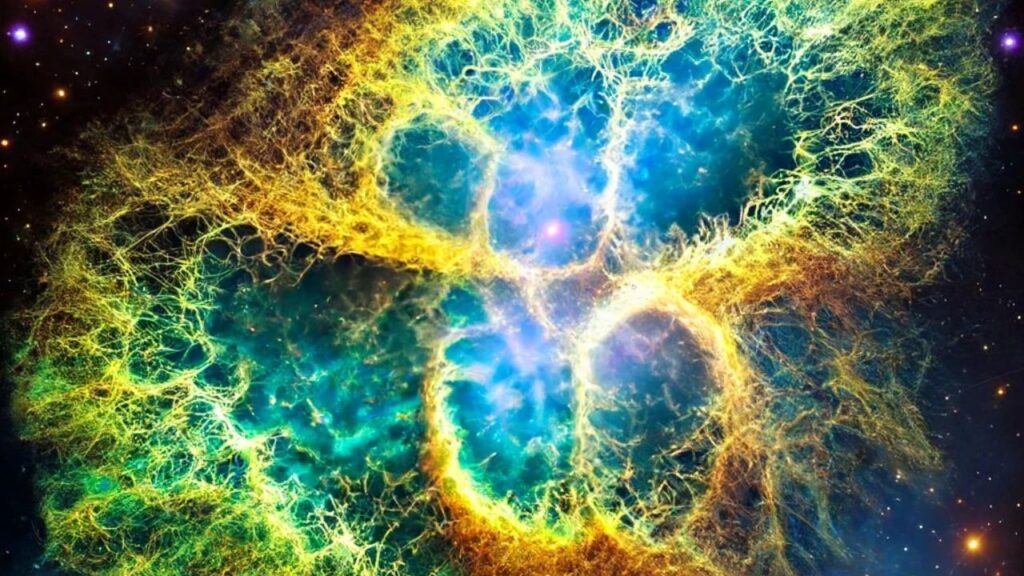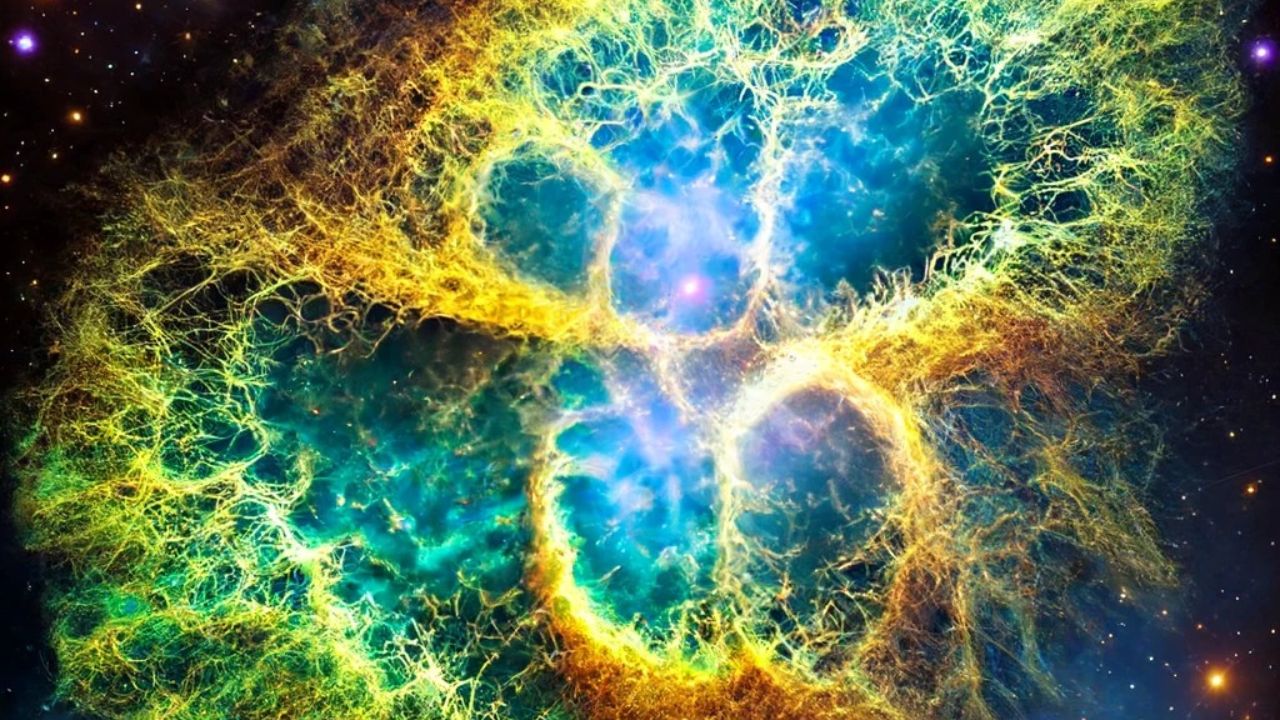Crab Nebula, NASA Webb Telescope, James Webb Space Telescope, supernova remnant, astrophysics, MIRI, NIRCam, electron-capture supernova, iron core-collapse supernova, stellar evolution, space research
New data from NASA’s James Webb Space Telescope offers groundbreaking insights into the Crab Nebula, a supernova remnant located in the constellation Taurus. By analyzing the nebula’s composition using advanced instruments, scientists are revising theories about the nature of its explosion. Discover how these findings are reshaping our understanding of stellar evolution and supernova mechanisms.
New data from NASA’s James Webb Space Telescope (JWST) is transforming our understanding of the Crab Nebula, a supernova remnant located 6,500 light-years away in the constellation Taurus. Using the telescope’s Mid-Infrared Instrument (MIRI) and Near-Infrared Camera (NIRCam), scientists are gaining fresh insights into the nebula’s composition and the nature of the explosion that created it.

A Historical Supernova
The Crab Nebula is the remnant of a core-collapse supernova, an event marking the death of a massive star. This supernova explosion was observed on Earth in 1054 CE and was so bright that it was visible during the daytime. Today, the Crab Nebula is an expanding shell of gas and dust, powered by a pulsar—a rapidly spinning and highly magnetized neutron star.
Unusual Characteristics
The Crab Nebula has long intrigued astronomers due to its atypical composition and unusually low explosion energy. Historically, these characteristics were explained by an electron-capture supernova—a rare type of explosion originating from a star with a less-evolved core composed of oxygen, neon, and magnesium, rather than the more typical iron core. However, recent data from the Webb telescope suggest alternative explanations.
Insights from Webb
“Now the Webb data widen the possible interpretations,” said Tea Temim, lead author of the study at Princeton University. “The composition of the gas no longer requires an electron-capture explosion, but could also be explained by a weak iron core-collapse supernova.” This new perspective challenges previous theories and highlights the complexity of supernova mechanisms.
Detailed Observations
The team utilized Webb’s spectroscopic capabilities to focus on two areas within the Crab Nebula’s inner filaments. By analyzing the emission lines of nickel and iron, they aimed to measure the abundance ratio of these elements more accurately. Past studies had indicated a high nickel-to-iron (Ni/Fe) ratio, supporting the electron-capture supernova theory. However, Webb’s more precise measurements found the ratio to be elevated but not as high as previously thought, leaving room for alternative explanations.
Reconciling Historical Data
Previous research calculated the explosion’s kinetic energy based on the quantity and velocities of the present-day ejecta. The explosion appeared to be of relatively low energy, less than one-tenth of a typical supernova, with the progenitor star’s mass estimated between eight to ten solar masses. This borderline mass suggests a star on the cusp of experiencing a supernova.
Pulsar Motion
There have been inconsistencies between the electron-capture supernova theory and observations, particularly regarding the rapid motion of the pulsar. Advances in our understanding of iron core-collapse supernovae suggest that low-energy explosions can also result from stars with adequately low mass, aligning with some of the new data from Webb.
Mapping the Nebula
Beyond spectroscopic data, the team also observed the broader environment of the Crab Nebula to understand the synchrotron emission and dust distribution. MIRI’s imaging capabilities allowed the team to isolate and map the warm dust emission within the Crab Nebula in high resolution for the first time. Combining this data with cooler dust grain observations from the Herschel Space Observatory, the team developed a comprehensive map of the dust distribution.
“Where dust is seen in the Crab is interesting because it differs from other supernova remnants,” said Nathan Smith of the Steward Observatory. “In the Crab, the dust is found in the dense filaments of the outer shell, unlike in other remnants where it is in the very center.”
Future Research Directions
The Webb telescope’s data covers only two small regions of the Crab Nebula, so further observations are needed to explore spatial variations within the remnant. The team plans to identify emission lines from other elements, such as cobalt or germanium, which could provide additional clues about the explosion’s nature.
Broader Implications
Understanding the Crab Nebula’s origins has broader implications for astrophysics. By studying the composition and structure of this well-known supernova remnant, scientists can refine their models of stellar evolution and supernova mechanisms. These insights can then be applied to other supernova remnants and similar cosmic phenomena.
Conclusion
NASA’s James Webb Space Telescope is revolutionizing our understanding of the Crab Nebula. By providing detailed spectroscopic and imaging data, JWST is helping scientists reconsider the origins of this famous supernova remnant. Whether the Crab Nebula was formed by an electron-capture supernova or a weak iron core-collapse supernova remains to be conclusively determined, but the new data has broadened the possibilities and deepened our understanding of the cosmos.
As researchers continue to analyze data from JWST and conduct further observations, we can expect more discoveries that will enhance our knowledge of supernovae and the life cycles of stars. The Crab Nebula serves as a prime example of how advanced technology and persistent inquiry can unveil the mysteries of the universe.
Read More
- NASA Voyager 1 Resumes Science Operations: Exploring Interstellar Space
- Boeing Starliner Prepares for June 22 Return: Key Milestone for NASA Space Program
- NASA Postpones Spacewalk Outside ISS Due to Spacesuit Discomfort Issue:
- NASA Prepares for Crucial Spacewalks to Repair and Upgrade International Space










